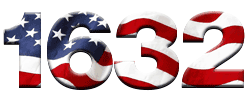From: “Virginia DeMarce” <virginiademarce@yahoo.com>
Date: Tue, 30 Oct 2001 21:26:33 -0600
Subject: Laity and literacy
For pulling early modern Germans out of stereotypes, one of the more interesting things to read is Miriam Usher Chrisman, Lay Culture; Learned Culture: Books and Social Change in Strasbourg, 1480-1599 (New Haven, Yale University Press, 1982)[Find in a Library].
She bolstered this with a bibliography of Strasbourg imprints (I do not know anyone at all who has read that straight through, but it’s a very useful reference work), and summarized it in a short article, “Printing and the Evolution of Lay Culture in Strasbourg 1480-1599” in R. Po-chia Hsia, ed., The German People and the Reformation (Ithaca, NY: Cornell University Press, 1988)[Find in a Library].
At the time, Strasbourg was a German city — although, as she points out, because of its geographical situation, a very popular type of book, not found often farther east, was the little manual on how to teach yourself French.
From the 1988 article, pp. 74-75:
“This article is based on the evidence from printed materials that include not only books but also pamphlets broadsheets, maps, songs, and calendars — any type of printed paper that came off the presses. Together, these documents make it possible to reconstruct the intellectual milieu of ordinary men and women. Written in the vernacular language, the books cover a broad range: popular medical treatises, technical handbooks, religious pamphlets, books on how to bring up children, biblical plays, propaganda songs, drinking songs, riddles and jokes, and music for the lute and other stringed instruments Many of these, according to their title pages, were explicitly written for a popular audience.”
“Five major elements characterized what I will call lay culture. First, there was a fascinating with the world of anture. In sharp contrast to the assumption that the sixteenth-century world was governed by superstition and the pursuit of magical formulas, books published in the vernacular reveal a consistent and informed curiosity about the physical world. This inquisitiveness was reflected in anatomy books, botanicals, herbals, geographical treatises, and books on astronomy and in journalism that reported on comets, voyages of exploration, and meteorological phenomena.”
Second, this interest in the natural world was strengthened by a desire for technical skills. Whether these were seen as a means for harnessing natural forces is a matter for conjecture. In any case, the quest was reflected in a variety of technical manuals and treatises, ranging from texts on surveying and applied mathematics to books on mining and scientific agriculture. Ordinary men and women also bought popular medical handbooks that would help them to meet the health needs of their families.”
“A third element in lay culture was a passion for self-instruction, already witnessed in the technical manuals. In addition there were all sorts of how-to books: how to conduct a case in court (without a lawyer); how to write letters to officials; how to make wine; how to make beer; how to build a sundial in your own backyard; how to teach yourself Latin. People were obviously eager to increase their knowledge and their skills.”
“A fourth element was a search for religious meaning that, in this period, found expression in acceptance of the teaching of the reofrmers.”
“Finally, there was a moral quest that reflected a desire for an ethic relevant to everyday life as lived within the community and the family. This search was expressed in novels, songs, poems,and above all, plays that the townspeople put on themselves. Popular culture expressed little cynicism; it was affirmative and optimistic and displayed pragmatism and empiricism rather than superstition and credulity.”
IMHO, she overstates this last point, but her work is a useful corrective to the kind of thought that regards the outbreak of witchcraft persecutions as normative rather than aberrational. For the period of her study closest to 1632, namely 1570-1599, her bibliography classified the production of the Strasbourg printers as follows:
Vernacular entertainment literature, 21%
Science, 20%
School texts, 16%
Protestant devotional/pamphlets, etc. 12%
Humanism (Latin literature), 10%
Law, 10%
Classics, 8%
Bibles and biblical commentary, 5%
She also summarizes some of the plots of the poems and novels. Harlequins should do very well 🙂
Virginia

Great post.